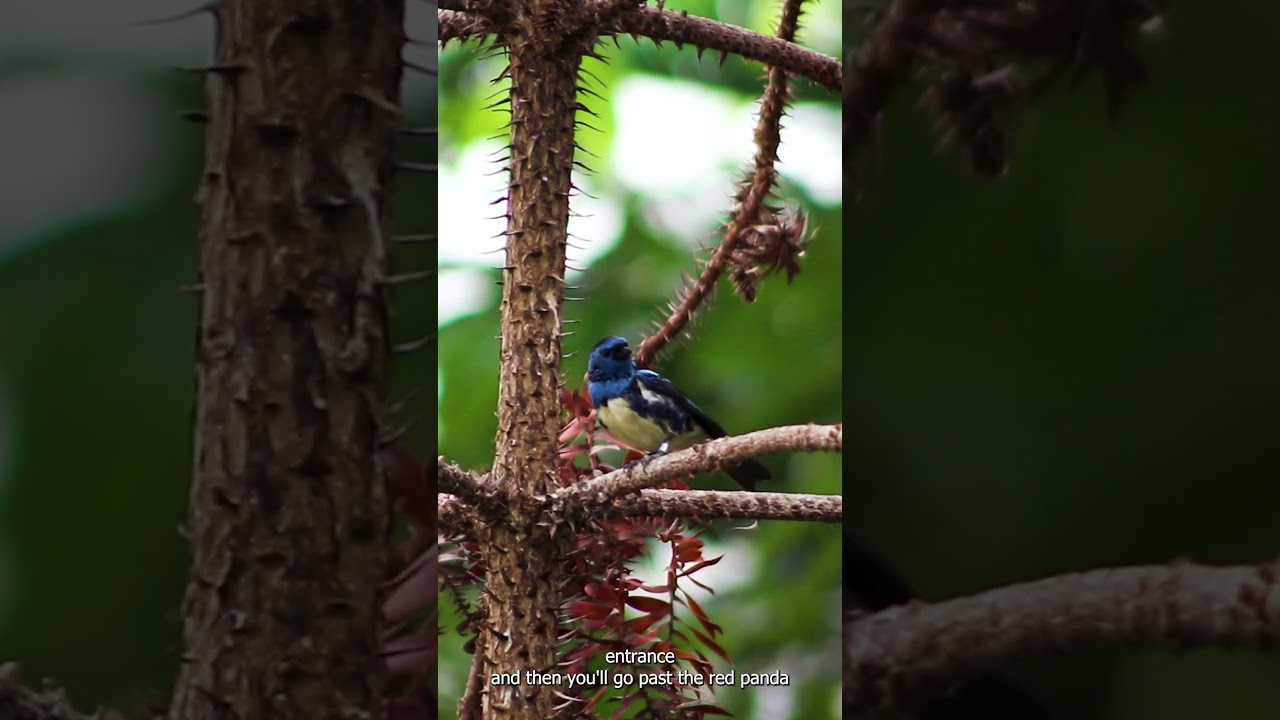– Understanding the motive behind introducing new bird species to zoos
– The ecological and educational importance of bird diversity in zoo settings
– How participating in SSP programs contributes to conservation efforts
– The role of non-breeding facilities in the grand scheme of species preservation
– The captivating allure of Avian wonders and their functions beyond aesthetics
There’s something utterly enchanting about the flutter of wings and the melody of chirps and calls that fill the air in a zoo’s aviary. As you meander through the walkways lined with lush greenery, each twist and turn introduces you to a new feathered marvel – a visual banquet of colors and forms. But have you ever paused to ponder why these winged creatures are not arbitrarily selected? Why do we often lead rn of new birds to find a perch within these safe confines? This goes much deeper than merely offering a delightful spectacle for the eyes.
**A Symphony of Wings: Why Introduce New Species?**
It’s no secret that zoos serve as modern-day arks, safeguarding against the rising tide of extinction. Each new bird species gently lands within a zoo’s care, a strategic decision, a piece in the intricate biodiversity puzzle that conservationists are determined to solve. These avian newcomers are often threatened or endangered in the wild, and each introduction marks a small victory in the conservation narrative.
With every new bird species, the educational tapestry of the zoo becomes richer; offering visitors a glimpse into ecosystems they might never physically traverse. It’s about crafting live encyclopedias – volumes of life where each page is a different bird with its unique story, role, and struggle in the natural world.
**Ecological Sentinels and Seed Spreaders**
Beyond the spectacle, birds fulfill pivotal roles in nature. Many are keystone species, serving as pollinators, seed dispensers, and pest controllers. They weave an ecological tapestry so complex that losing even a single thread, like the stunning Honeycreeper or the industrious African Hornbill, could unravel entire ecosystems.
By exhibiting an array of bird species, zoos educate and create a ripple effect of awareness. Each visitor who leaves with newfound knowledge becomes an advocate for these flying guardians of the environment, understanding that the loss of birds isn’t just a loss of beauty, but a seismic disturbance in the intricate workings of our planet’s life-support systems.
**The Unsung Heroes: Non-Breeding Facilities**
While places like Blank Park Zoo may not have the chorus of baby bird cries echoing from nests, their importance cannot be overstated. Not every institution needs to be a breeding facility to play a crucial role in the Species Survival Plan (SSP) programs. Non-breeding facilities contribute by offering a haven for those who might not currently partake in the breeding lottery but still require care, conservation, and a platform to raise awareness of their plights.
Moreover, these facilities can act as ark builders – assembling the genetic diversity needed when the time comes for SSP programs to tap into new bloodlines for breeding initiatives at fellow Association of Zoos and Aquariums (AZA) accredited institutions.
**Conservation Choreography and SSP Programs**
When zoos engage in SSP programs, they’re not just playing matchmaker for a love-lorn Albatross or Lory. They are participants in a meticulous conservation ballet – with each movement and decision choreographed to bolster wild populations. Through collaborative efforts, these programs manage animals’ genetic diversity and demographic stability, ensuring that future generations are robust enough to survive in the world’s ever-changing habitat.
These feathered denizens, whose very existence may hinge on the success of SSP programs, act as flagship species, drawing attention to broader conservation issues. Care, research, and breeding under human watch contribute vital knowledge and effort that bolster the chances of these species to continue gracing our skies.
**The Allure Beyond the Aesthetic**
As you stand before an aviary, captivated by the dance of birds of paradise or the stoic gaze of a raptor, it’s essential to peel back the layers of beauty to reveal the grandeur of purpose beneath. Each bird, be it the vibrantly hued parrot or the subtly toned finch, is a thread in the intricate tapestry of our biosphere.
As they dip and soar within their engineered ecosystems, these birds carry stories of survival, adaptation, and the unyielding resilience of nature. They remind us of the wonders in the wild expanses beyond our urban jungles – treasures we’re entrusted to protect for generations to come.
Zoos don’t simply add new birds to their collections as one would collect stamps. Each new species is a living, breathing testament to the diversity of life on this planet and a beacon of hope for conservation efforts worldwide. Their inclusion in zoos is a statement that we, as a species, are willing to take on the stewardship of our planet’s biological legacy.
**In Conclusion**
As we revel in the splendor of these winged residents, let’s not forget the profound significance behind their presence. They are more than just a passing beauty to be admired. They are ambassadors, educators, and participants in a fight for survival across continents and species.
Zoos, whether breeding facilities or not, stand as strongholds in this battle – offering refuge and an opportunity for people to connect, understand, and ultimately care for the natural world. Introducing new bird species is a testament to this commitment, ensuring the sky’s chorus remains vibrant and full for many years.
So, the next time you find yourself spellbound by the enchanting display of feathers and flight at your local zoo, remember each bird’s purpose. In their beauty and grace, they carry the weight of an entire ecosystem on their wings, a reminder of what’s at stake and our role in preserving the natural wonders of our world.
*****
Source Description
Why all the new birds? While they’re beautiful, some birds serve a greater purpose. While Blank Park Zoo may not be a breeding facility for them, we house birds that could be used for SSP (Species Survival Plan) programs at other AZA facilities.


